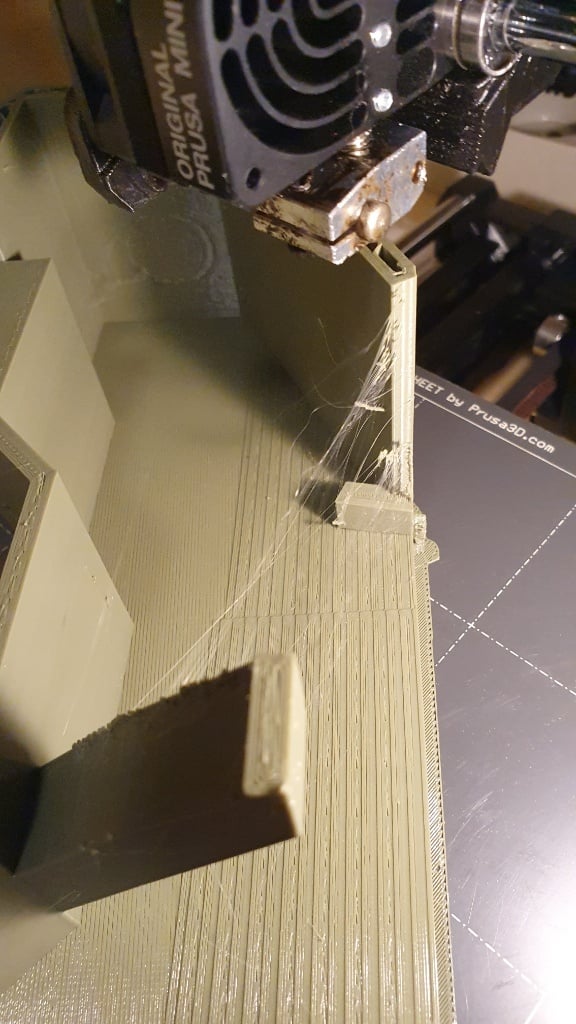Often a combination of temp too high, not enough retraction, or water contaminated filament.
If the plastic in the hot end is too hot it will keep "running" out of the nozzle after retraction and you'll get strings. Similarly if you don't retract enough to actually pull plastic out of the nozzle during a rapid move, it will want to keep pushing thru. This is supported by the little blobs it leaves on that angled surface corner its travelling to when stringing, thats excess material squeezing out during its rapid moves then being left on that wall.
And if there's water in your filament all bets are off on how it'll behave.
215 is pretty warm for that esun PLA especially if you're using the stock brass nozzle, try bumping that down to 205 or even 200, and increase your retraction speed and distance settings in prusaslicer a tiny amount (0.1mm distance, 2mm/s speed at a time until you see improvement is plenty)
Use a temperature calibration tower to test things out.
